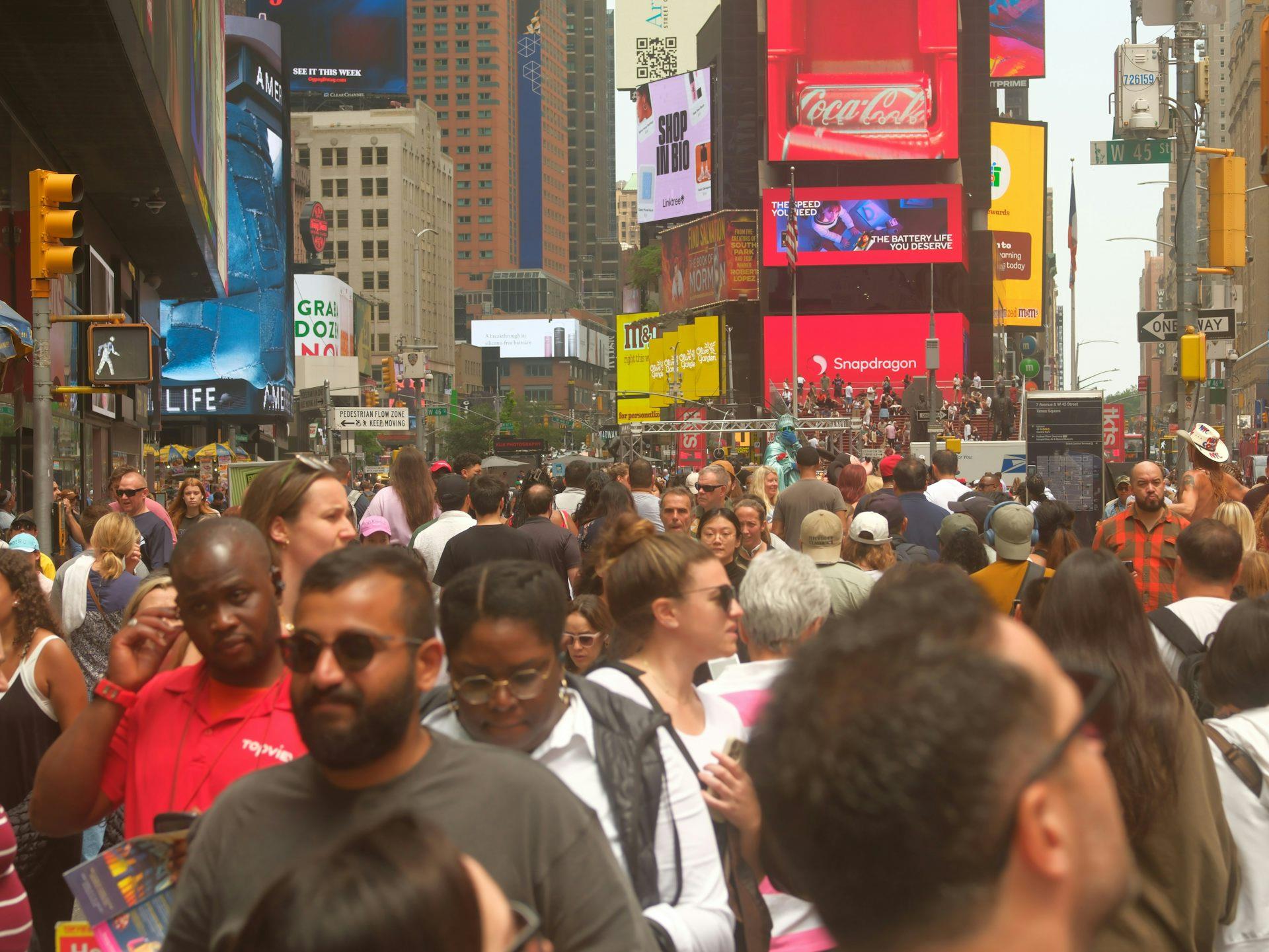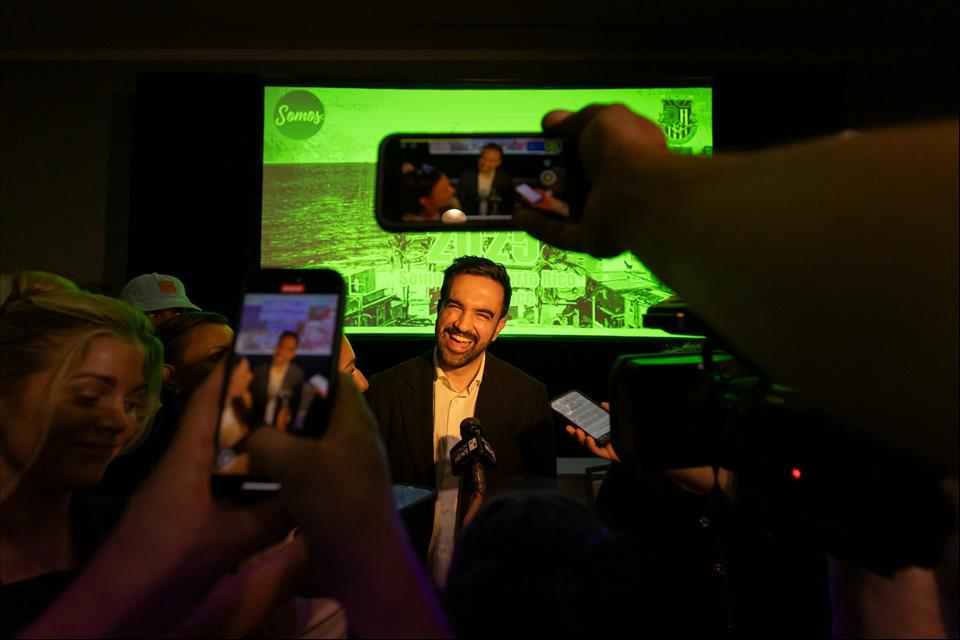
Zohran Mamdani's Win Shows How Multilingualism Bridges Divides In Diverse Democracies
Instead, he switched between Arabic, Bangla, English, Hindi, Luganda, Spanish and Urdu to connect with diverse communities. He also made appearances on transnational media outlets to discuss issues that crossed borders.
I am a post-doctoral fellow at the University of British Columbia, studying the integration patterns of immigrants and how they're shaped by the intersection of language, ethnicity and migration.
For me, Mamdani's story is more than a local success. It signals how politics is being reshaped by migration and multilingualism and how language itself has become a foundation of belonging in diverse democracies.
Multilingual politicsMamdani's campaign began with a simple but powerful line:
This message resonated across the city's working-class neighbourhoods - taxi drivers, nurses, delivery workers and students, many of them immigrants trying to make ends meet. What made it even more effective was how he delivered it: not just in English, but in the many languages New Yorkers speak.
He repeated his call for affordability and fairness in Arabic, Bangla, Urdu-Hindi, and Spanish. His campaign videos and flyers mixed languages the way people do in everyday life, switching easily between English and the languages of home.
This was about more than translation; it was about recognition and connection with people.
New York is one of the most linguistically diverse cities in the world, with more than 800 languages spoken. Nearly 35 per cent of its residents are born outside the United States.
Mamdani understood that voters don't leave their languages behind when they migrate. They use them to make sense of work, community and politics. By speaking to them in those languages, he showed that their voices mattered in shaping the city's future.
Political integrationThis approach reflects what scholars of migration linguistics - the study of how language and mobility shape one another in the process of migration, settlement and belonging - describe as multilingual political integration.
It is a way migrants connect identity to civic participation. Mamdani's campaign turned that bridge into a political strategy: one that viewed multilingualism not as an obstacle to democracy, but as its living proof.
It also serves as a quiet reality check on the long-standing“melting pot” ideal in the United States, which assumes immigrants must shed their languages and traditions to blend into a single American identity.

New York voters defy the melting pot ideal in the United States, with many of them retaining their languages and traditions. (Rohan Gangopadhyay/Unsplash) A transnational campaign
Mamdani's multilingual strategy also reflected the transnational reality of modern migration. His Urdu interview on Pakistan's Geo News and his criticism of India's Narendra Modi during conversations with Indian-origin voters in the U.S. blurred the line between domestic and global audiences.
These appearances were not campaign gimmicks; they acknowledged that diaspora communities are shaped by more than one national story.
Migration linguistics helps explain this dynamic. It studies how language practices move across borders and connect places of origin, settlement and diaspora. In Mamdani's case, multilingual communication created what scholars call transnational publics - shared spaces of conversation that stretch from New York to Karachi and Delhi.
When a politician addresses issues such as Islamophobia, immigration or housing in multiple languages, they are not only appealing to voters at home. They are engaging with a wider world of shared experiences that migration has woven together.
Read more: How Zohran Mamdani's 'talent for listening' spurred him to victory in the New York mayoral election
Culture as communicationLanguage was only part of Mamdani's strategy. His campaign also used cultural expression - food, music and festivals - as forms of communication.
From Iftar gatherings during Ramadan to Diwali celebrations and South Asian street fairs, these events became spaces of multilingual interaction where taste, sound, and ritual carried political meaning.
Migration linguistics views such practices as intercultural competence: the use of cultural forms to express belonging and solidarity.
Mamdani's campaign showed that civic participation doesn't only happen in speeches or debates; it also happens in shared meals, songs and celebrations that remind people they belong to the same city.
Zohran Mamdani supporters react as they watch returns during an election night watch party on Nov. 4, 2025, in New York. (AP Photo/Yuki Iwamura) Lessons for Canada
Mamdani's brand of of politics holds lessons for Canada. Since I wrote on this topic earlier this year, immigrant and racialized voters are already changing how campaigns are organized and how communities mobilize.
Read more: How racialized voters are reshaping Canadian politics through digital networks
Canada's largest cities, in particular Toronto and Vancouver, are among the most linguistically diverse in the world. Yet a lot of political outreach still assumes an English- or French-only audience.
Mamdani's campaign suggests another path. By engaging multilingual voters through their languages, stories and digital networks, politicians can build deeper, more authentic relationships.
It's time for Canadian politicians to move beyond teleprompters and translators and learn and use minority languages as a genuine way to connect with multilingual voters as they make up a significant portion of the electorate.

Legal Disclaimer:
MENAFN provides the
information “as is” without warranty of any kind. We do not accept
any responsibility or liability for the accuracy, content, images,
videos, licenses, completeness, legality, or reliability of the information
contained in this article. If you have any complaints or copyright
issues related to this article, kindly contact the provider above.

















Comments
No comment